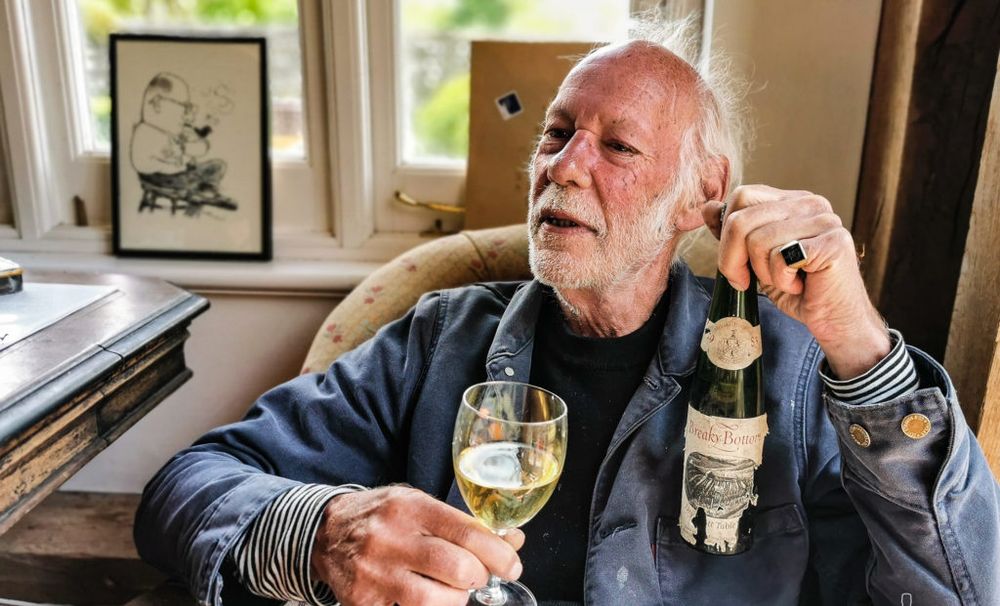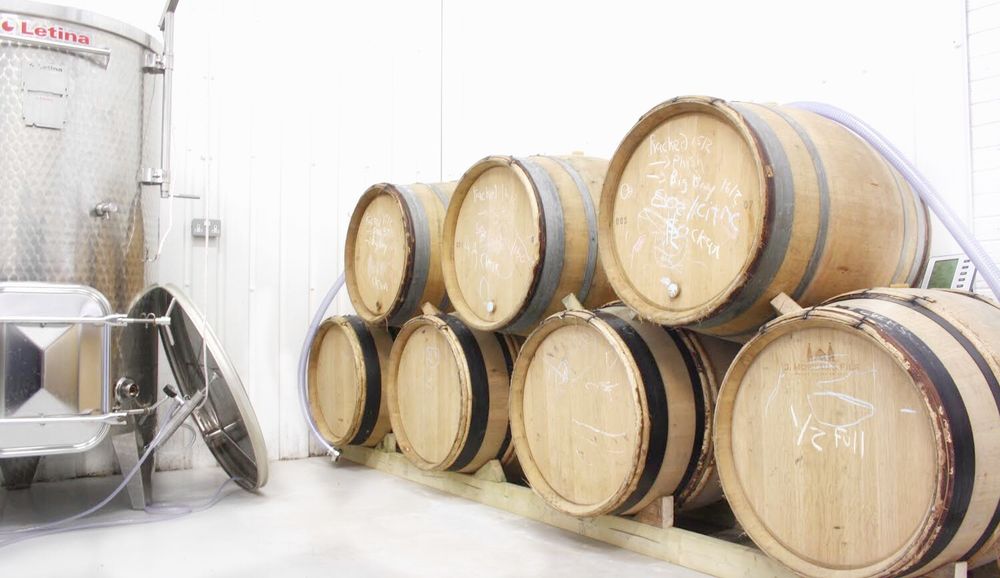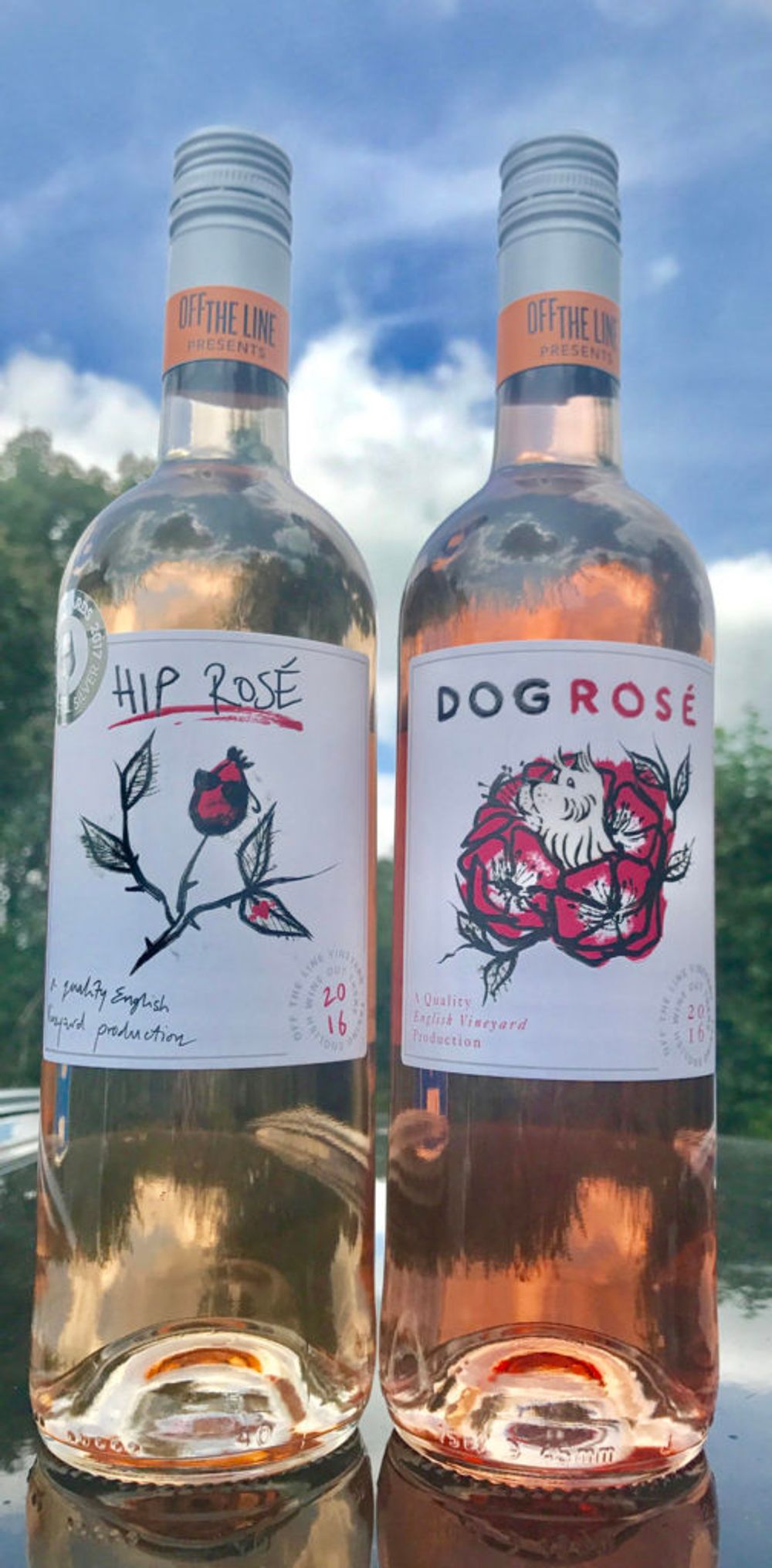“I like that there are house styles beginning to emerge, and English Sparkling Wine has escaped beyond the realm of niche into the vocabulary of everyday wine consumers” says Brad Greatrix at Nyetimber, West Sussex.
As we were waking up to early morning sunshine throughout May, trying to make the most of Lockdown, the long, chilly nights wrought havoc on many of the 658 vineyards that now neatly sew many of the UK’s pretty horizons. High-level vigilance was needed to safeguard this year’s vintage, coming as it does after 2019 which for many had its own array of challenging issues.

Peter Hall, Breaky Bottom
The 2020 vintage for many British winemakers, though, will be all about the frost, hitting one winery as late as May 20th. For Breaky Bottom, near Lewes, Sussex it is the first time that it has experienced frost damage since 1974 and the night of the 13th May caused almost total wipeout. Secondary growth can make good the damage but it will inevitably affect yield and can affect quality. Big palate fires or smudge pots lit between the vines, to keep the surrounding temperatures above zero, might look the picture on Instagram but for the 200 estates hit by frost with 25 reporting damage between 90 and 100%, it is a stark reminder of winemaking on the edge of what is possible.
But from its very humble beginnings, what a long way the British wine industry has already come, and it feels as if the pace has picked up once again.
The commercial revival of the UK wine industry began in the 1950s – Hambledon, was the first commercial vineyard to be founded in Hampshire in 1951 – but what may have been once considered a novelty continues to attract serious attention both here and abroad – 40 UK wineries now export their own wines, doubling stats over the last three years from 4% to 8%, while home production has increased from 5.9m bottles a year in 2017 to 13.2m in 2018 – with an estimated 40m bottles being produced come 2040.

Brad Greatrix, Nyetimber
“We’ve grown in maturity, sophistication and confidence. I like that there are house styles beginning to emerge, and English Sparkling Wine has escaped beyond the realm of niche into the vocabulary (and wine racks) of everyday wine consumers” says Brad Greatrix at Nyetimber, West Sussex.
Davy Zyw, English wine buyer for Berry Bros & Rudd suggests that another reason for the UK’s continued success is the diversity of styles. “It’s not all conveyor belt Brut NVs now. Take our BOS Blanc de Blancs for instance, the Hambledon Extra Brut and the 2015.” Jonathan White, marketing director at Gusbourne in Kent agrees, citing what he considers a “dramatic change” in the UK wine industry over the last five years. “As the industry matures and our winemakers gain confidence I think we will see many more different styles and expressions.”
Gusbourne, like a number of others, shows its diversity through the occasional production of still wines, a category that is growing “but this is a tremendously challenging style to produce consistently year-to-year in our marginal climate” warns White, saying Gusborne only produces still wine when the vintage permits the “necessary quality, and production numbers fluctuate accordingly.”
Outside of Chardonnay and Pinot Noir, other grape varieties are making waves across wine competitions and people’s palates alike. Flint Vineyard, for example, makes a still Bacchus, and a more unusual Pinot Noir Précoce – an early ripening Pinot Noir, loved for its aromatics and soft tannins – perfectly suited to the English climate, and right at home in winemaker Ben’s experience of Beaujolais and Burgundy.

Blackbook Winery, London – one of four urban wineries in the capital
Other smaller ‘garagiste’ wineries are innovating here too – using varietals such as Cabernet Noir – as in the case of Blackbook Winery in London’s Battersea (one of four urban wineries now in London). This is “a super variety that has a lot of potential in the UK,” says Sergio Verrillo, American-born winemaker, who owns Blackbook with Scottish wife Lynsey. The domestic market is now providing enough demand for such operations to exist, which is a relatively new phenomenon.
“I don’t think we’d have had the same response if we started ten years ago. Even five years ago. We’ve been fortunate to pop in at the right time,” says Sergio on a recent #EnglishWineNight Instalive tasting – set up by @WineGB – the industry body for the grape growers and winemakers of Great Britain. There are many more great opportunities on social media these days to follow some of these smaller outfits, share in their incumbent enthusiasm for the UK wine scene today – and watch how the movers and the shakers continue to challenge and progress.
So if you’re still looking for a bottle of English wine to raise a glass to English Wine Week then here’s what I would recommend.

- Hip Rosé, Off The Line Vineyard, Sussex – an aptly named decent drop of 100% Pinot Noir rosé from red-wine-only-newbies founded by Kristina Studzinski and Ann-Marie Tynan and located in East Sussex.
- 2018 Flint Vineyard, Charmat Rosé, Norfolk – This aromatic blend (of Solaris, Bacchus, Reichensteiner and Rondo) is made using the Charmat method (the process used for Prosecco)
- Hambledon, Première Cuvée, Rosé, Dosage Zéro, Sparkling, Hampshire – This new, limited-edition cuvée is a bone-dry, pure expression of Pinot Meunier.
- ‘I’d rather be a rebel’ rosé, Blackbook Vineyard, London – made from grapes grown on the Crouch Valley Vineyard in Essex. Fermented in old French oak, this is a fantastic example of a mouth-filling English rosé. With art-deco packaging mirroring the old Tobacco Factory on Mornington Crescent.
- 2018 Balfour Brut Hush Heath Estate Springfield Chardonnay, Kent – only made in exceptional years, this lightly oaked wine has the texture and mineral character befitting of a quality bottle of locally-grown Chardonnay.
- 2009 Nyetimber, Blanc de Blancs, Sparkling, Sussex – a 100% Chardonnay with over ten years age showing how quality English Sparkling Wine can mature well, just like Champagne.
- 2015 Gusbourne Estate, Brut Reserve, Kent – a quintessential English gent of a wine from a hallmark vintage.
- 2018 Bacchus, Flint Vineyard, Norfolk – Flint’s 2018 Bacchus is different in style to its predecessor, with a definite mineral focus, attributed to individual site characteristics as well as exceptional vintage conditions
- 2015 Berry Bros. & Rudd, English Sparkling, Blanc de Blancs (made by Hambledon Vineyards, Hampshire) – Bright and vividly fresh, this showcases the quality of English Chardonnay in 2015.
Sophie McLean is Trade Marketing Manager (wine) for Fields, Morris & Verdin.









































